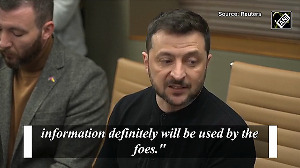The Reserve Bank of India is planning a regulatory limit on inter-bank exposure in call money in step with the prudential limit in the equity market.
Call money is dealt in the inter-bank market where banks lend and borrow for daily fund requirements. The funds are borrowed and lent overnight without any collateral.This means banks do not pledge anything for their borrowings. This exposes a lender bank to 100 per cent risk. Thus, the RBI sees liquidity and credit risks in defaults.
At present, each bank has an internal counter exposure limit for the other, which is approved by the board of a bank. However, there are no regulatory limits, like in the case of the equity market.
The RBI feels that if the exposure limit of a bank is linked to its capital base or any other asset parameter, the systemic risk arising from such non-collateralised borrowing or lending can be curbed.
This non-collateralised borrowing and lending work out to an average daily volume of Rs 10,000-12,000 crore (Rs 100-120 billion), posing a great systemic risk. Dealers say if this limit is set, it will lead banks to shift to collateralised funding, which is term money market or repos.
At present, there is no term money market, which makes short-term corporate borrowing for 15-20 days very difficult. After overnight borrowing, the next maturity available for a corporate borrower or an investor is a 90-day commercial paper.
Besides, the financial system is heading towards a consolidation. The call money market is also highly leveraged. This means that foreign banks, small co-operative banks and primary dealers that sustain on a limited capital base, often borrow in excess of their limits from the call money market. Dealers say, usually a bank or a primary dealer is 3-4 times leveraged in the call money market.
Thus, if any small co-operative bank is liquidated or if big banks merge, the lending banks have no recourse to recovering the money they have lent.
In the Madhavpura scam, according to a dealer, banks were stuck with around Rs 50-100 crore (Rs 500 million to Rs 1 billion) in call money lending. Similarly, in the Harshad Mehta scam, money was chanelled from the call money market to buy government securities.
Money matters







 © 2025
© 2025